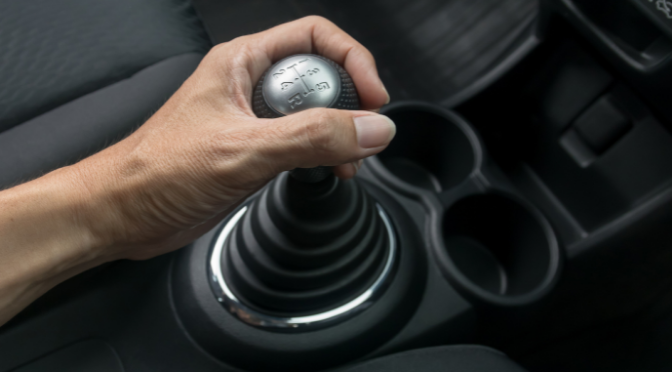What are the first few thoughts that would come to your mind when you hear the word “Car”? Most have this picture of themselves in a branded vehicle, super polished and extravagant with the speed and mileage of their dreams. In the midst of this flattery and consumerist mindset, we tend to forget the basics. We overlook the most important aspects of a car, for example, transmission. Automatic or manual, which transmission should you opt for?
This question arises when you actually need to make a decision on the car you’re going to buy, not when you’re fantasizing about the object. But before you continue, it’s important to know what exactly you’re going after. For that very purpose, below is a buyers guide that will help clear a few things :
- Purpose
It’s crucial to know why you’re going to invest in a car. What are the things you’re going to make it do? How many people do you intend to fit? What are the places you’re potentially going to visit? Once you’re clear on its use in your daily life, you’ll be able to determine the characteristics that meet your requirements. That way, ruling out cars that don’t fall under a criterion will make the job easier ! - Budget
You could be a middle-class worker, or an aspiring Jeff Bezos. Both are at monetary extremes, but what they have in common is planning. They research and compare prices, features, and unique components. A car can be your biggest asset, so choosing the right one is important, but buying it at a price that won’t majorly hurt your pockets will give you a win-win. Insurance, maintenance, registration, overall costs- there’s a lot of expenditure. Try staying within a limit that you set for yourself. - The body
While it’s super important to determine the best car for yourself on the basis of its uses, this vehicle is hyped in terms of the different looks it offers. That will further tackle concerns regarding the space and design. Typically, one goes for the SUV, Sedan, Hatchback or MPV. - Other features
This is the best part as your dream car should take care of all your needs. Consider the colour, seats and polish, and look at the safety features it has along with mileage and tires, music and radio systems, etc. The most important one out of this list though, is the transmission fluid you prefer. Is it going to be automatic or manual?
As the name suggests, an automatic car makes life easier by doing a lot of things without the driver. The manual on the other hand requires the driver to carry out tasks on their own. An automatic mechanism has 4 key features: drive, reverse, park, and neutral. All you have to do is set it in a mode that applies to the scenario you are in. The car takes care of everything else. In a manual, there’s a clutch besides the accelerator and brakes. The clutch has gears that alter the speed, force, and direction of your car.
Generally, people prefer learning the manually-powered vehicle because it exposes you to an additional feature of the car. That way, you’d be at ease even if you were to drive an automatic some day. However, this principle doesn’t work the other way around. Automatic’s are trained to drive without gears so they’d have no practice with manual’s whatsoever.
To understand which one to choose will be hard for you, let’s create a quick list of features of both the transmission types.
Manual
Cheap for the win: Where there’s more effort, there’s more rewards. Manual drivers don’t have the leverage to keep one hand idle while they drive. They constantly have to go for the clutch, and so, with one less feature, their overall costs reduce. These include maintenance and repair.
Expertise: As mentioned earlier, Manual drivers are exposed to both ways of driving. This gives them the upper hand when in a dicey situation.
Better control: A Lot of times we trust humans over machines. While automatic gives you a less cumbersome experience, it also puts your life in the hands of a mechanism that you barely know. With manual’s, you’re in charge of everything.
Automatic
Less work: The gears in an automatic car respond to the external environment themselves and shift according to what the vehicle encounters. This is a business class experience within your car. You just need to focus on steering the wheel, rest is taken care of.
Better hold of situations: When in traffic, a manual driver would constantly have to worry about pressing gas, balancing breaks and speed, however an automatic driver need not encounter that problem. When going uphill, a manual requires you to shift gears constantly but an automatic does that for you simply by setting it in drive mode. Want to eat a sandwich while driving? Well, choose an automatic to free the other hand!
Naturally, the pros for a manual are the cons of an automatic and vice versa. The only major disadvantages lie in the costs and expertise a driver gains from the other. An automatic repair/maintenance charge will be higher than a manual, but a manual driver will have more knowledge of the car and its application.
Final Say
Hopefully, this article has cleared the air not only about what you must consider when buying a car, but also what type of transmission you want to catch hold of. We hope that this much knowledge is enough to know if automatic or manual, which transmission you should opt for? Both options are beneficial in their capacities. While choosing automatic or manual, you should also keep in mind the buyer’s guide- Purpose, Budget, Body, and Features. Happy Buying!
No Fields Found.






